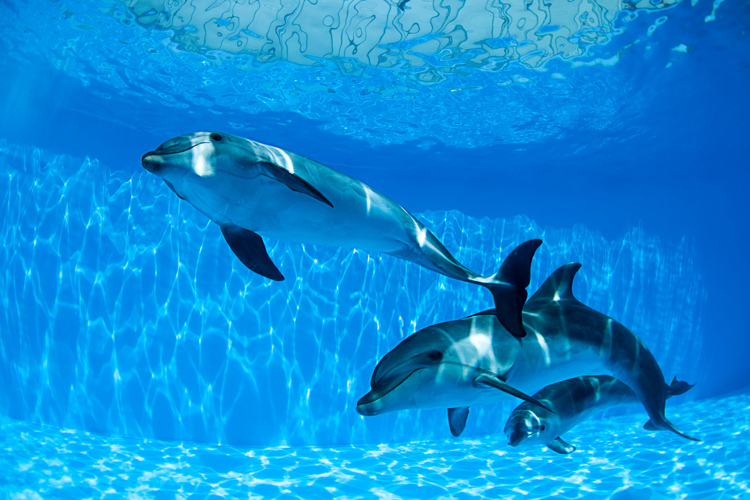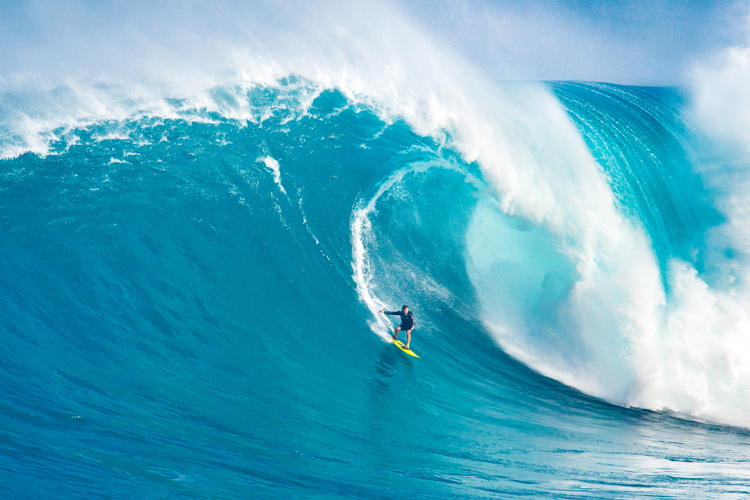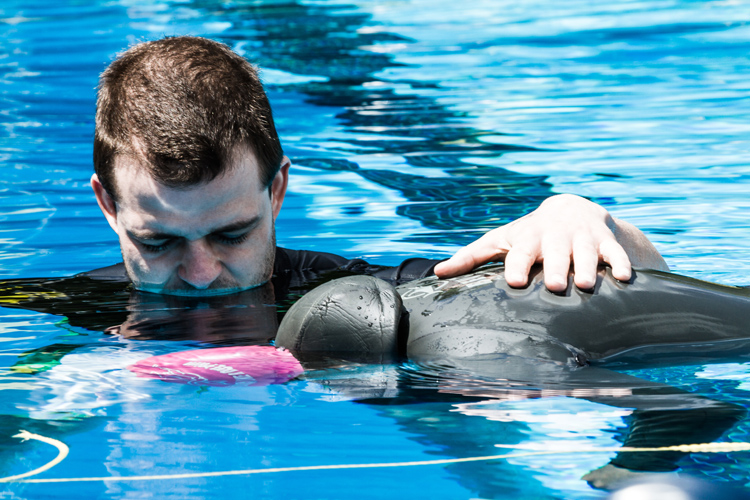The mammalian dive reflex is a series of physiological responses that occur when air-breathing vertebrates hold their breath underwater.
The reaction can be observed in aquatic mammals - dolphins, seals, otters, whales, and muskrats - and is also genetically encoded in part-time residents in the water like human beings.
Think of it as a survival instinct we all possess.
Divers, surfers, swimmers, and people, in general, can take advantage of the mammalian dive reflex to optimize and increase breath-hold.
And you don't even need a pool to exercise it.
The physiological mechanism kicks in when you immerse the nostrils and face in the water, trigging four main reactions:

1. Bradycardia
As soon as your face makes contact with the water, your heart rate falls - the process is called bradycardia.
According to physiologists, the mammalian dive reflex can drop someone's heart rate from 10 to 25 percent.
Technically, by slowing down the heart rate, the heart and brain will consume less oxygen, allowing humans to stay underwater for an extended period.
English physician Edmund Goodwyn (1756–1829) was the first person to identify bradycardia and the mammalian dive reflex.
2. Splenic Contraction
The spleen is a reservoir for large blood volumes.
Because of the low levels of oxygen and high levels of carbon dioxide, the spleen contracts and releases red blood cells to increase blood oxygen capacity.
This process may occur before bradycardia and could, in humans, lead to heart rhythm irregularities.
3. Peripheral Vasoconstriction
Peripheral vasoconstriction is an autonomic response to cold exposure in which the blood vessel walls contract to narrow blood vessels and reduce blood flow.
The physiological response causes the human body to redirect blood to vital organs instead of getting pumped out to our fingers and toes.
So, the narrowing of blood vessels starts in the fingers, toes, hands, feet, arms, and legs, channeling blood and oxygen to vital organs.
4. Blood Shift
The mammalian dive reflex is only triggered in water temperatures below 70 °F (21 °C). And interestingly, the colder the water, the faster the reaction.
As a result of peripheral vasoconstriction, when we immerse our face in the water, a large amount of blood accumulates in the blood vessels of the lungs to protect them from collapsing at high-pressure depths.
Entering Survival Mode
The diving response enables our body to be better prepared to preserve its temperature in cold water and even protect us in deep-depth pressure environments.
The mammalian dive reflex exists in human adults and diving birds like penguins and ducks, primates, and rodents.
Newborns arrive with an automatic mechanism that spontaneously closes the windpipe (trachea) located close to the vocal box when they're underwater.
However, that innate skill disappears when the baby reaches the age of six months.
The diving reflex is an instant and automatic reflex activated when our sensory receptors - carotid chemoreceptors - touch the water.
When they detect wetness, the trigeminal nerve sends information to the brain, which immediately triggers bradycardia.
The body then enters oxygen and blood conservation mode, with the heart, brain, and lungs as top priority receivers.
Mammals can't breathe underwater, or they will drown. Humans, in particular, suffocate, lose consciousness, and die when our innate, automatic reflex to breathe forces us to inhale water into our lungs.
So, biologists and physiologists have wondered whether or not this remarkable, sophisticated, and enigmatic response was designed to preserve life by conserving oxygen.
Apparently, it looks like it is a leftover natural survival mechanism from the time when life began and evolved in the oceans.
What we do know is that the diving reflex is a smart and preventive mechanism that enables our bodies to manage and tolerate lower levels of oxygen.

Putting the Mammalian Dive Reflex to Work
Humans can take advantage of the diving response to improve their breath-holding time in competitive scenarios but also relax and calm their nerves.
For example, a cold, wet towel might be all you need to trigger the physiological response and lower your pulse rate.
Obviously, if you're a freediver, spearfisher, swimmer, or big wave surfer, you can artificially trigger the reaction to extend your time underwater without artificial oxygen and improve diving performance.
In other words, when our lungs are unable to breathe like they usually do, anxiety kicks in, the brain enters panic mode, and adrenaline is released.
As the heart rate soars, oxygen consumption reaches maximum levels.
The trick is to override the body's inbuilt natural reaction to breathe, using the mammalian diving response as an ally.
The standard resting heart rate for an average adult ranges from 60 to 100 beats per minute.
Experienced freedivers can lower their heart rate to 30 beats per minute.
The current Guinness World Record for the longest underwater breath-hold belongs to the Spanish world champion freediver, Aleix Segura Vendrell.
On February 28, 2016, he held his breath for 24 minutes and 3.45 seconds at the Mediterranean Diving Show in Barcelona.
